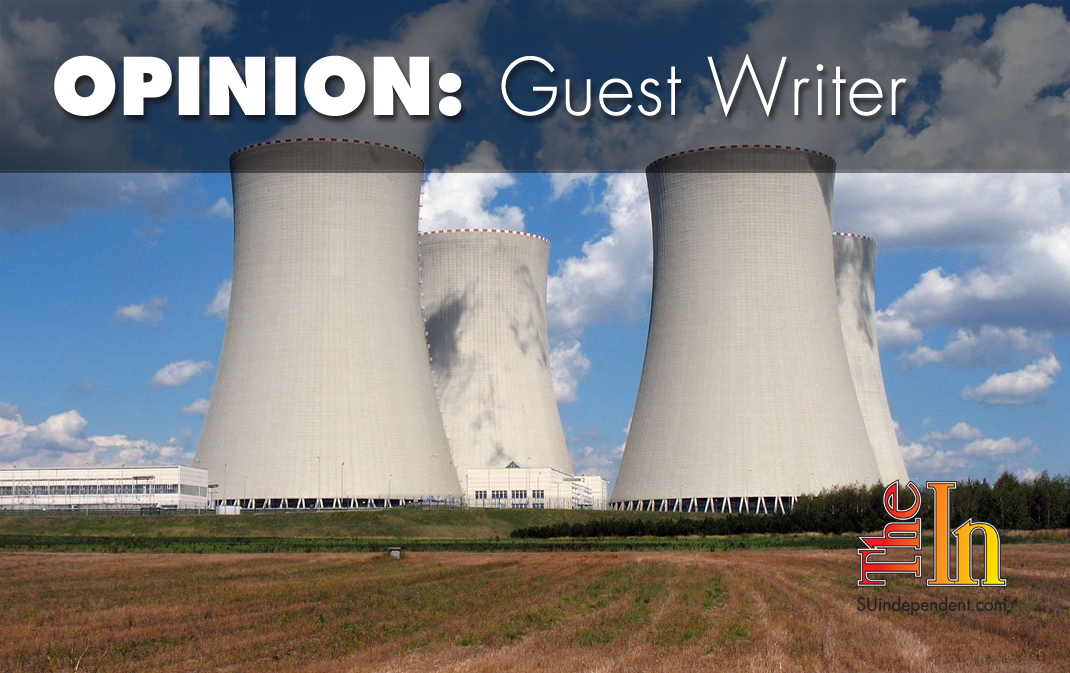
Stop nuclear cronyism
By Robert L. Bradley, Jr.
In June, President Trump directed Energy Secretary Rick Perry to bail out struggling nuclear and coal power plants. Such federal action would come on top of state bailouts, such as New Jersey’s just approved $300 million annual lifeline to keep three nuclear plants running.
The administration claims, as do nuclear companies, that bailouts are necessary to safeguard national security should fossil-fueled power plants go offline from a cyberattack or a natural disaster.
While it is true that nuclear plants can store significant amounts of fuel onsite, the administration’s argument is a far stretch. A recent report from the Rhodium Group determined that a minuscule share of power outages — 0.00007 percent — have resulted from a shortage of onsite fuel. The study also failed to discover any clear link between nuclear power generation and more reliable energy systems.
Why nuclear in the first place? During its 1970s building boom, utility executives and politicians thought oil and natural gas were running out. Nuclear energy was also thought to be less expensive, even having promised to be “too cheap to meter.”
The opposite was true. Nuclear cost overruns became legendary. Meanwhile, deregulation cured the oil and gas supply problem. Today, thanks to hydraulic fracturing, natural gas prices are at historic lows with the United States leading global production.
As a result, generating electricity at a new gas-fired power plant is estimated to cost half as much as at a new nuclear facility. This is in theory.
In practice, the discrepancy has proven far greater. Two federally subsidized power plants in Georgia are now $9 billion over budget and five years behind schedule. South Carolina ratepayers are looking at an 18 percent higher bill for two recently abandoned nuclear construction projects. The collateral damage included the bankruptcy of nuclear builder Westinghouse last year.
The failed promise of nuclear energy was certainly not due to a lack of government aid. Between 1948 and 2007, federal R&D subsidies for nuclear energy totaled more than $80 billion, according to Taxpayers for Common Sense. The 2005 Energy Policy Act devoted $2 billion in subsidies to six nuclear plants around the country. The Price-Anderson Nuclear Industries Indemnity Act of 1957 has subsidized insurance in case of nuclear accidents for the past 60 years.
Sixty out of the original 132 nuclear plants remain in operation today, accounting for about 20 percent of America’s electricity generation. By 2050, nuclear output is expected to decline by one-fourth.
There is one way that the federal government can aid nuclear energy without exploiting captive ratepayers or taxpayers — by ending the Production Tax Credit for existing and new industrial wind turbines.
Wind power directly competes against and can ruin the economics of nuclear energy. In certain circumstances, kilowatt hours of wind output are sold at very low, even negative, prices just to get the 2.4 cent tax credit. That leaves nuclear and even gas- and coal-fired plants, which do not get this subsidy, with artificially low revenue to cause premature capacity retirement.
The obvious answer, then, is to end the tax subsidies for existing wind facilities, not to double down on government subsidies.
It’s not the job of government officials to decide which energy technologies succeed and which fail. And it’s certainly not their job to prop up uncompetitive firms by raising electricity costs on average citizens and requiring taxpayer involvement. The consumer-driven marketplace alone, if theory and history are any guide, should arbitrate.
Robert L. Bradley Jr. is the founder and CEO of the Institute for Energy Research.
The viewpoints expressed above are those of the author and do not necessarily reflect those of The Independent.
How to submit an article, guest opinion piece, or letter to the editor to The Independent
Do you have something to say? Want your voice to be heard by thousands of readers? Send The Independent your letter to the editor or guest opinion piece. All submissions will be considered for publication by our editorial staff. If your letter or editorial is accepted, it will run on suindependent.com, and we’ll promote it through all of our social media channels. We may even decide to include it in our monthly print edition. Just follow our simple submission guidelines and make your voice heard:
—Submissions should be between 300 and 1,500 words.
—Submissions must be sent to editor@infowest.com as a .doc, .docx, .txt, or .rtf file.
—The subject line of the email containing your submission should read “Letter to the editor.”
—Attach your name to both the email and the document file (we don’t run anonymous letters).
—If you have a photo or image you’d like us to use and it’s in .jpg format, at least 1200 X 754 pixels large, and your intellectual property (you own the copyright), feel free to attach it as well, though we reserve the right to choose a different image.
—If you are on Twitter and would like a shout-out when your piece or letter is published, include that in your correspondence and we’ll give you a mention at the time of publication.



